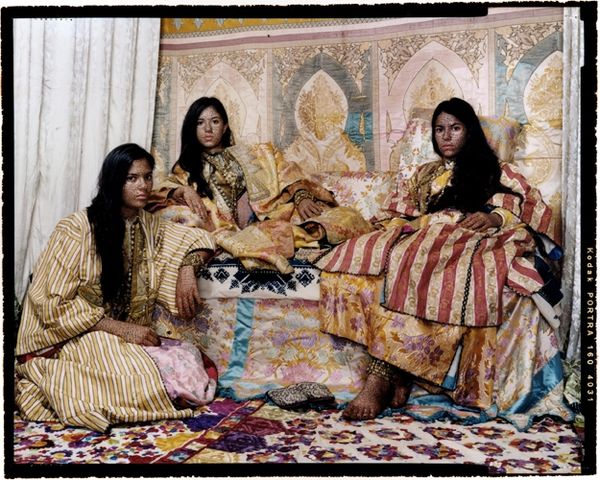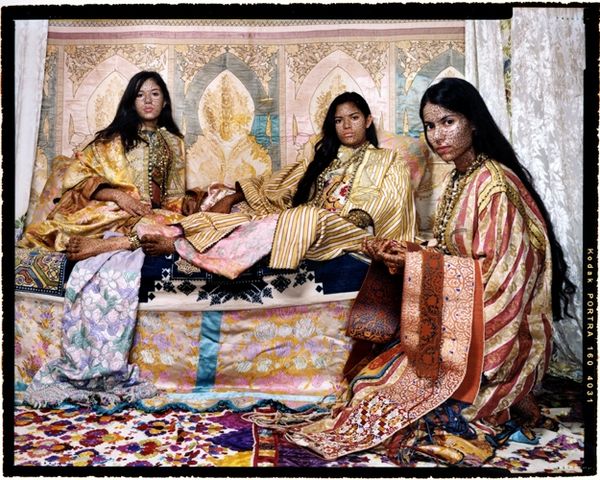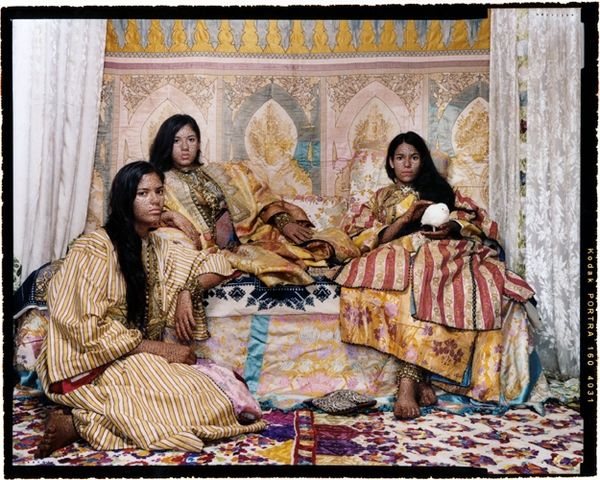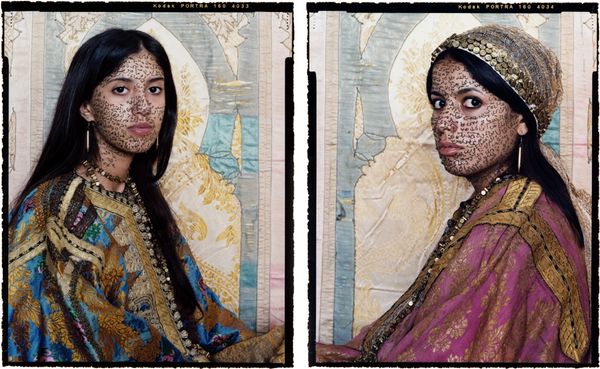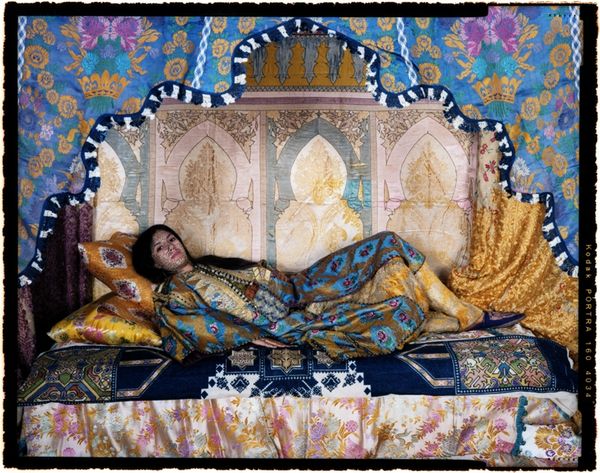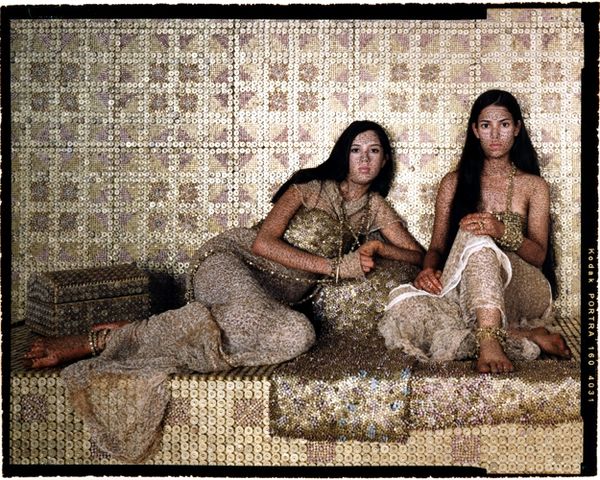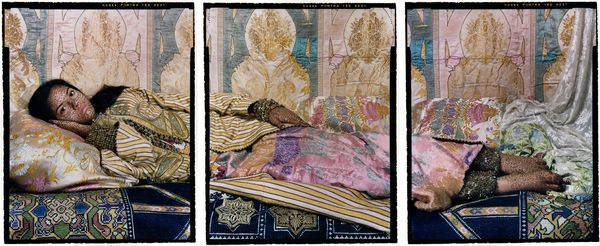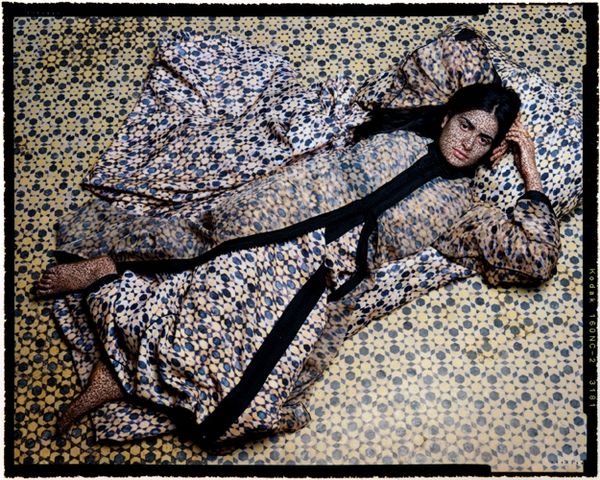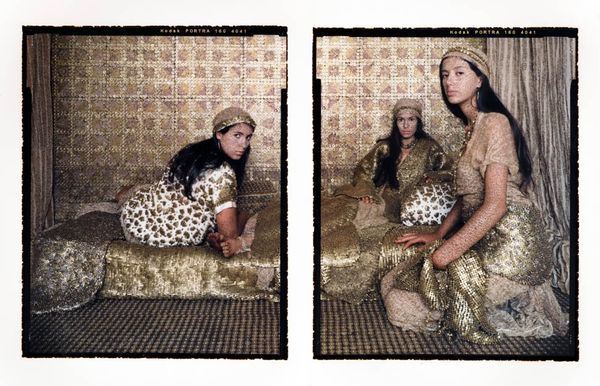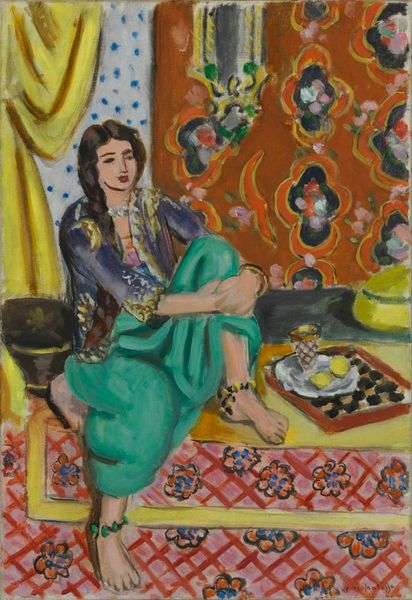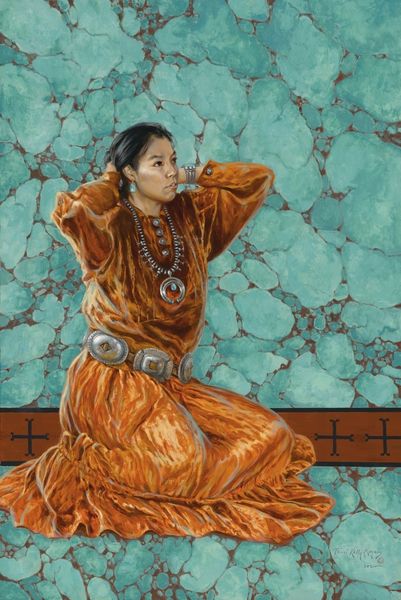
textile, photography
#
portrait
#
textile
#
photography
#
orientalism
#
islamic-art
#
textile design
Copyright: Lalla Essaydi,Fair Use
Editor: Here we have Lalla Essaydi's "Harem #32" from 2013. It’s a mixed media piece incorporating photography and textiles. The layering of fabrics is just incredible! What can you tell me about it? Curator: It's precisely that layering we should consider. Essaydi deliberately chooses these fabrics, sourcing them, arranging them, and photographing them. We see textile production not just as background, but as actively constructing the scene and commenting on the history of orientalism itself. The henna, the pose, these reference well-worn tropes. Editor: Right, it does seem to be playing with orientalist themes, but also subverting them somehow. Is she challenging those traditional representations through her choice of materials? Curator: Precisely. The settings appear luxurious, yet look closer. Note the surfaces. The henna patterns merge with the textiles, almost obscuring the women, who were her relatives, suggesting that they too, are commodities of this constructed space and its representation, its manufacture and export across continents. Where does "art" end, and labor begin? Editor: So, the material choices, the fabrics and henna, are key to understanding the critique of orientalism she’s putting forward? Curator: Exactly. By foregrounding these materials and the processes of making visible labor, Essaydi isn’t just depicting a harem; she’s deconstructing its representation, exposing its production. Editor: I see what you mean, by literally highlighting how orientalist imagery has been fabricated by Western eyes, she's disrupting traditional ideas of high art and craft. Thank you so much! Curator: My pleasure. The power truly lies in recognizing how materials speak volumes.
Comments
No comments
Be the first to comment and join the conversation on the ultimate creative platform.
